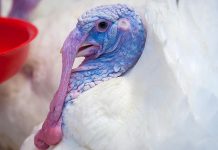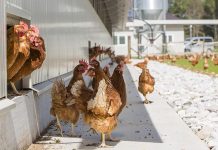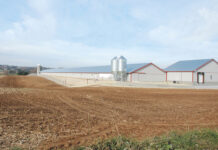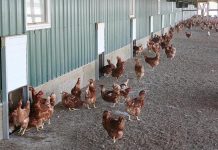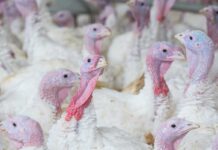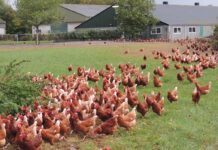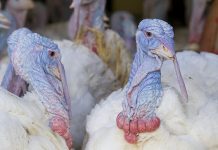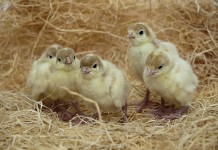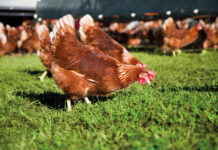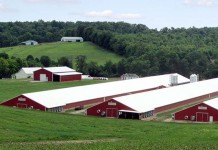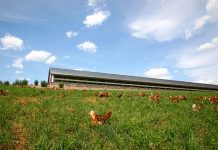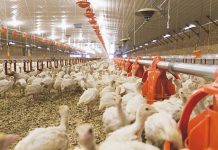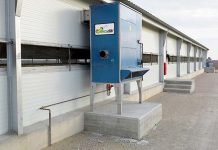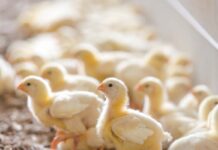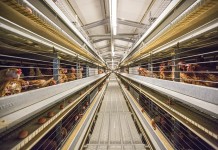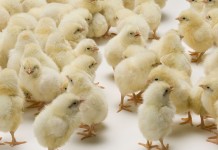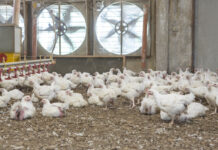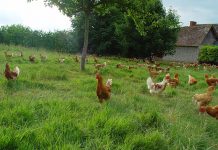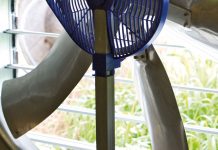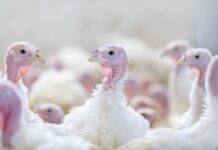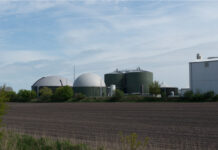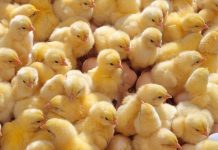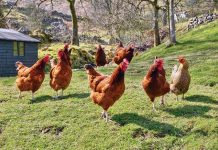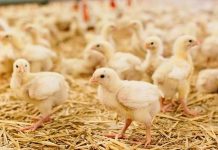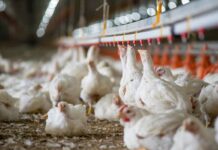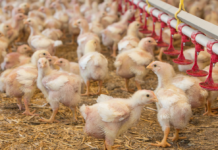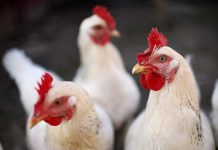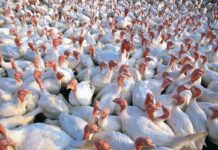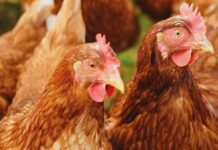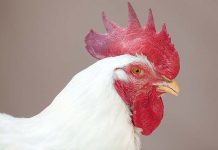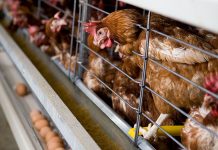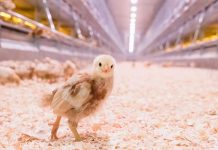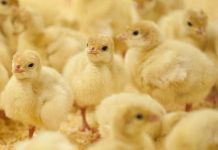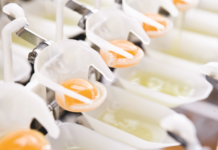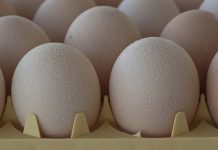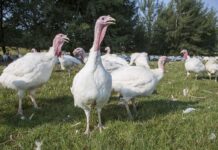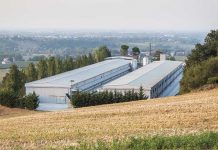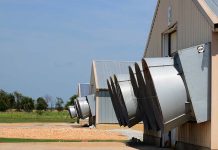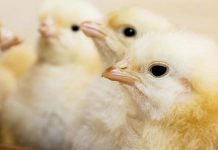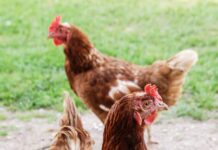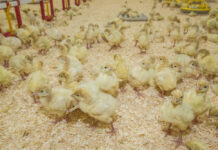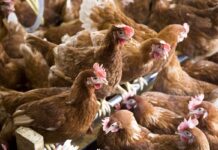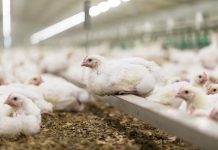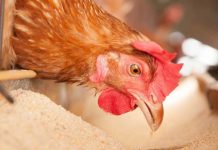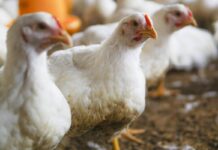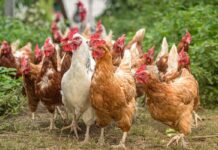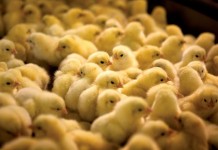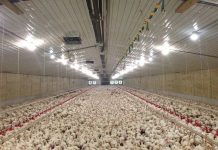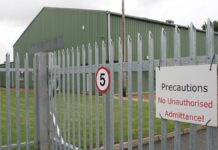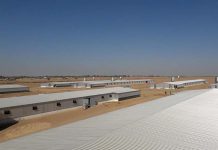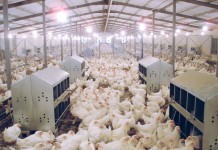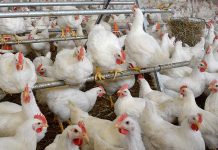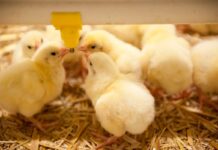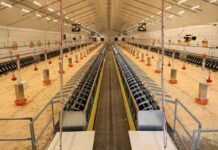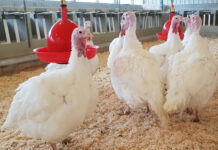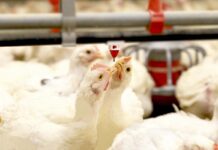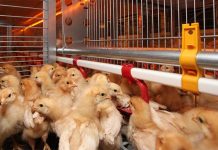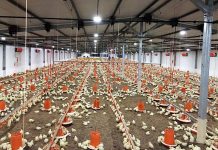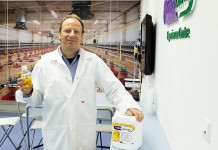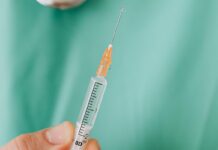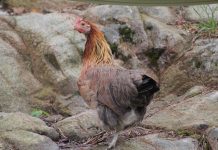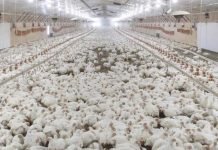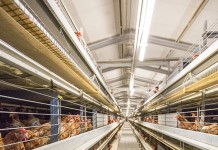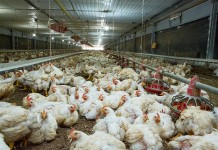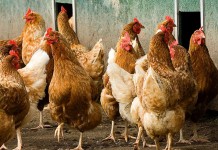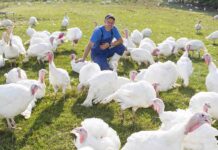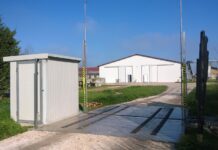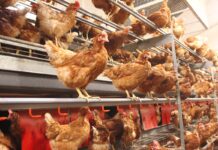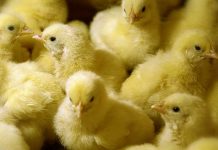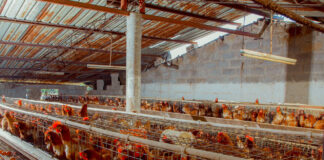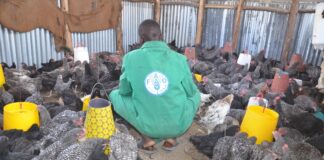Turkey Breeding – Making the most of genetic potential
Genetic potential
Successful and profitable turkey production occurs across a wide range of production systems and farming environments. Breed choice, farming facilities, equipment, management, nutrition...
Flip-overs: causes and solutions in brooding
The poult start is an extension of the hatching process. The whole process, including poult placement, is only as strong as its weakest link.
William...
New technologies in housing, equipment and computer controls
The poultry housing and equipment industry continues to develop, introducing new technologies in line with trends in modern communications and ventilation systems. As expected...
Impact of layer alternative systems on management and production costs
The use of alternative systems in layer farming has increased in the commercial egg industry due to pressure arising from consumers concerns about hen...
Balancing beetles with the bottom line
Darkling beetles, commonly referred to as litter beetles, are a widely encountered pest for those in the broiler production industry. Litter beetles are holometabolous...
Alternative systems: pros and cons
Alternative production systems of cage-free or range egg production are increasing in number due to outside influences. The outside constituents forcing this growth are...
The impact of anthelmintic resistance in parasites of poultry
USPOULTRY and the USPOULTRY Foundation announced the completion of a funded research project at the University of Georgia in Athens, Georgia, in which researchers...
Consequences of outdoor ranging on external and inter-nal health parameters of hens from different...
Free-range layer pullets are typically reared indoors within Australia, but adult layers go outdoors which might cause poorer adaptation due to the mismatch between...
Resources and tools to write a good biosecurity plan
Poultry
industries in the United States (U.S.) have been in a unique situation after
the 2014-2015 highly pathogenic avian influenza (HPAI) outbreak. Analysis and
epidemiology of the...
Minnesota Turkey launches 3rd “day in the life of a turkey farmer” video
Minnesota turkey grower Loren Brey of Brey Farms, New Ulm, Minn., was recently featured in “A Day in the Life of a Turkey Farmer”...
Breeding for robustness in turkeys
Turkey breeders have invested in selection methodologies to ensure the commercial cross is capable of delivering outstanding performance with good welfare under a variety...
Diagnostic strategies for the control of avian Mycoplasmas
Mycoplasmas are bacteria without the cell wall which cause infections in poultry especially at respiratory and articular level.
They are the smallest single-celled organisms found...
What we do and don’t know related to cage free egg production research
During the early 2000s the pressure was on the U.S. egg industry to increase cage space and to transition from conventional cage systems to...
Exterior and interior strategies for rodent control
As the weather cools, rodents seek refuge indoors where there is easy access to food and water. Rodents are vectors for spreading disease, which...
Animal breeding reduces environmental impacts
Results of a study show that breeding reduces environmental impacts of animal products by about 1% per year. This is achieved without specific selection...
Higher stocking densities decrease performance without altering turkey meat quality
Quality of turkey meat is important but consumers are also concerned for the well-being of animals raised for meat production. However, some in the...
Eco-friendly heating for efficient poultry breeding
The new standards for commercial poultry breeding have been requiring more sustainable, efficient and cleaner technologies. Along with it, the organic poultry production is...
Methods for recovery and quantitation of viral nucleic acids from broiler litter
There is a well-recognised problem with both the supply of broiler litter material in some regions, and with the disposal of spent litter. This...
Best practice in broiler house management
How the right technology and proactive management can ensure best practice in housing on broiler farms
In partnership with Cobb, this article examines best practice...
Housing systems in laying hen husbandry- First part
A status report
This analysis is an abridged version of a report which the author prepared for the International Egg Commission (IEC) in London, UK.
In...
Understanding poultry lighting
A short guide to poultry lighting for layer farmers
Identification of broiler poultry house dust components using chemical and physical analysis
Dust found in poultry housing is a complex substance most likely comprised of a mixture of excreta, feather, feed and bedding material.
M. Ahaduzzaman, L....
Essential oils – Opportunities to improve food safety in organic poultry production and processing.
Organic poultry – A growing sector with challenges
Poultry is the most widely available organic meat in the U.S. and predicted to have increased consumer...
Ventilation and heating issues during cold weather
Many problems during cool and cold weather can be traced to inappropriate ventilation rates. Poor broiler health, respiratory problems, and breast blisters are common...
A correct lighting is essential in poultry houses
Many poultry producers appreciate the importance of light in maximising performance. Whether chickens or turkeys, laying hens, commercial growers or parent stock, all poultry...
Turning Poultry Manure into Power: How Biogas Can Benefit Your Farm and the Climate
As the poultry sector looks for ways to improve sustainability and energy independence, biogas production from chicken manure is proving to be a practical...
Minimizing antibiotic use in broiler production
Many countries are being asked to reduce or eliminate antibiotic use in poultry, due to growing concerns about the use of antibiotics in food-producing...
Spent hens: Can we improve their welfare?
The aim of this study was to observe the improvement in welfare indicators of spent hens kept in three different housing systems.
Sixteen Isa...
Intra Chickpaper: double grip prevents legs to slip in chicks
Splayed legs in chicks is a condition that occurs in newly hatched chicks. It is caused by a weakness or injury in the tendons...
Navigating an antibiotic-free and reduced antibiotic use poultry industry
Antibiotics are a type of antimicrobial medication used to treat infections caused by bacteria. In the 1930s, a sulfonamide was the first commercially available...
Ammonia control during brooding begins when previous flock ends
The level of ammonia young chicks will be exposed to during the first week of their lives is determined to a large extent by...
Biosecurity practices and investments implemented by today’s poultry producers
One brick higher
The 2015 outbreak of highly pathogenic avian influenza (HPAI) virus devastated the United States poultry industry. A novel Eurasian-North American H5N2 was...
Graded levels of stocking density for turkey toms raised to 16 weeks of age
Stocking density can be one of the most important drivers of economic return; however it can greatly influence bird performance, health, and welfare. In...
Egg bacteriological study
Eggs from 10 commercial brands were selected in different types of housing: cage and on the floor (free of cage) obtained from 4 supermarket...
Cobb suggesting management tips to maximize male fertility
The role of males in poultry breeding is extremely important. Each male is responsible for fertilizing 10 or more females. Each hen produces at...
Research shows limited effectiveness for two darkling beetle control products
USPOULTRY and the USPOULTRY Foundation announce the completion of a funded research project at the University of Georgia in Athens, Ga., in which researchers...
Alternative housing system’s impact on feeding pullets and layers
In order to satisfy consumer demands for their food to be produced a more “humane” manner the retail outlets are pushing the egg industry...
Factors that contribute to consistent quality poult starts
The process of egg production, hatching, processing and delivery of a quality poult are all important and stressful points that impact the lives of...
Understanding egg quality
Egg quality is multi-faceted, with physical, functional, and microbial aspects contributing to egg quality. Research has shown that many factors impact egg quality including...
Maintaining hatching egg quality through good hygiene and handling
The microbiological status of a hatching egg is highest immediately after the egg is laid. The objective, therefore, is to ensure that quality is...
Effects of feed presentation on growth performance and gut health of turkeys
The combined effect of feed presentation parameters bears considerable implications for the digestive health and growth performance of turkeys. This topic is very relevant...
Big data for poultry – first part
The term big data may at first appear incongruous to animal agriculture. However, by capturing, analysing, reporting and sharing of through-production chain data with...
Effective ventilation key to Cobb500™ development
Effective ventilation plays a key role in the health and performance of broiler flocks. Nigel Strain, Cobb senior regional technical manager for Europe, the...
Effects of corticosterone injection at embryonic day eleven on broiler growth and tonic immobility
Elevated corticosterone in ovo can have significant lasting impacts in avian species, including poultry. Stress in broiler breeder hens can lead to elevated corticosterone...
Researchers investigate how laying hens visually perceive the resources in cage-free housing
USPOULTRY and the USPOULTRY Foundation announced the completion of a funded research project at Purdue University in which researchers investigated how laying hens visually...
Researchers evaluate the effects of heat stress in poults
USPOULTRY and the USPOULTRY Foundation announced the completion of a funded research project at North Carolina State University in which researchers evaluated the effects...
Improved fly control on poultry facilities with microbial products
Parasitoid wasps and the entomopathogenic fungi Beauveria bassiana were both examined to see if augmentative releases of the pathogenic organisms can help lower house...
Light intensity preferences of broiler chickens in farms
There has been a growing interest in the relationship between light intensity and welfare for commercial broiler chickens. A choice approach was employed to...
How much cold pressed canola meal can we use in layer diets?
Canola meal has been available for the layer feed industry in Australia for over 30 years. However, very little has been used due to...
Reducing stress during broiler catching: a practical welfare package with real benefits
The catching phase in broiler production is one of the most critical—and stressful—moments for birds. How this process is managed can make a major...
Management of ectoparasites in cage-free housing systems
As cage-free systems become more frequent in poultry production, we are forced to evaluate how pest control measures should adapt to ensure efficacy.
The...
A practical approach to broiler breeder management in the absence of beak treatment –...
In the absence of beak treatment management strategies, which ensure appropriate bird development and growth and the provision of adequate environment and stimuli, which...
How to improve indoor air quality in poultry housing
USPOULTRY and the USPOULTRY Foundation announce the completion of a funded research project at Iowa State University in Ames, Iowa, in which researchers provided...
Best practice in biosecurity
How to effectively manage and reinforce best practice in biosecurity on broiler farms
This article examines best practice in broiler production, focusing specifically on biosecurity....
Partially slotted flooring systems for market toms – What are the possibilities?
Avian influenza virus is stable longer in moist and cool conditions. Depending on seasonal and production conditions barn air and litter (bedding) moisture can...
Hot weather management
Hot weather can have a detrimental effect on flock performance and in extreme cases cause heat loss. While you cannot control outside weather conditions,...
A practical approach to broiler breeder management in the absence of beak treatment –...
In the absence of beak treatment adhering to proven and agreed best practice management practices is key. The roles of good stockmanship and promoting...
Big data for poultry. What is possible? – second part
The term big data may at first appear incongruous to animal agriculture. However, by capturing, analysing, reporting and sharing of through-production chain data with...
Assessment of the use of perches to improve leg health in meat chickens
Poor leg health in Australian fast growing meat chickens is a major welfare issue, resultant from long-term genetic selection for bird size and growth rate...
Brooding
Getting chicks off to a good start is very important to overall flock performance. At no time does a bird grow faster than during...
Challenges and opportunities in establishing a new turkey parent stock operation in a remote...
The Russian turkey market has shown substantial growth during the last decade with new and very large companies willing and able to invest considerable...
Managing turkeys coming into lay
The first few weeks between transfer of turkeys to the laying farm and the peak of production can have a big influence on flock...
Best practice in management
How management best practice can help support profitability on broiler farms
In partnership with Cobb, this new series of articles will examine best practice in...
Raising Pullets in Alternative Systems
Productive and profitable layers begin with good quality pullets. Having the correct body weight and body type at the start of egg production will...
The five principles of broiler brooding for modern broilers
Investing in new technologies, while important, is not the only way to reach top performance potential in broilers. Simple efforts such as paying attention...
Optimal fat utilisation by Intra Liposol at broilers
It is difficult - especially for young animals - to optimally digest the range of fats and oils in the diet. This leads to...
Wet litter. Factors associated with the shed micro-environment and litter properties
Wet litter in meat chicken sheds occurs as the result of multiple, interrelated causes. This paper discusses some of the sources of water in...
The use of antibiotics in the poultry industry
Antimicrobial resistance in human and animal isolates in the E.U. remains a significant problem despite the bans of antibiotic growth promoters and the reductions...
Welfare and cost benefits through automated grading and vaccination
Evaluation of working time requirements of different grading and vaccination processes.
One of the most important measures for the quality of poultry breeding stock is...
Efficacy and economics of oral fluralaner for the treatment of northern fowl mites in...
Once mites are observed in one area of the barn they tend to progressively spread to the whole barn and subsequently to the next...
The Finnish Landrace Breed and a successful conservation program in Finland
Finnish landrace breed chicken is classified as a light egg layer. Meat is also consumed subsistence production and it is described as tasteful.
There is...
Current trends in litter management
As much of the broiler industry transitions to antibiotic free production based on consumer demand, broiler house management is changing more substantially than it...
The importance of monitoring chicks water usage
Getting chicks off to a good start is very important to overall flock performance. At no time does a bird grow faster than during...
Light intensity and led lights
Light intensity can be measured in three ways: luminous intensity, luminous flux and luminous power. Led Lights are here analyzed.
Luminous flux is the total...
Performance benefits of probiotic and protease in broilers subject to Eimeria challenge
Consumer pressure and government regulations are driving US poultry industry to remove antibiotic growth promoter (AGP) from poultry production.
Nutrition program including feed additives is...
Visual identification of potential feather pecking
Feather pecking behaviour is common in floor-housed laying hens a behavior, which is positively associated with developing feather pecking habits.
It has been suggested that...
How does your turkey grow?
Predicting how a turkey flock might grow under different nutritional and environmental conditions is a question of interest to everyone involved in turkey production...
Biosecurity, the basics
By biosecurity we mean those measures aimed at reducing the risk of introducing and spreading infectious agents on farms, i.e. bio-exclusion and bio-containment measures.
Luigi...
Perches: environmental enrichment or mechanical challenge?
The study compared the impact of wire ramps and perches on meat chicken mobility and the incidence of detached femoral caps (DFC), which can...
Considerations for a better quality of chicks
During the incubation period, embryonic growth and development are affected by different factors, as breeder age, the incubation temperature and the availability of egg...


